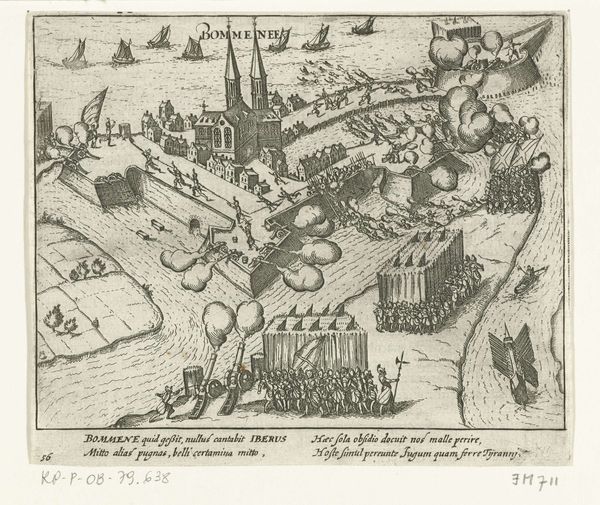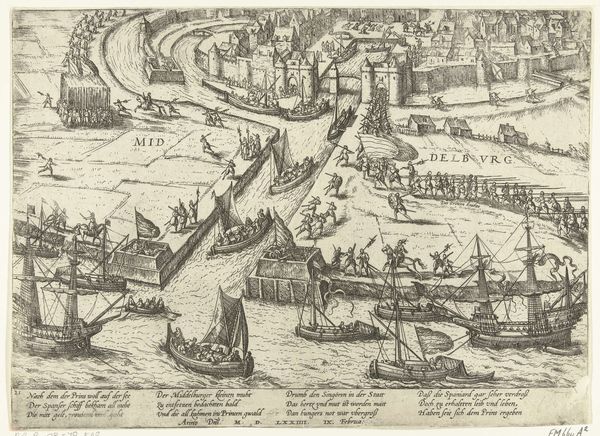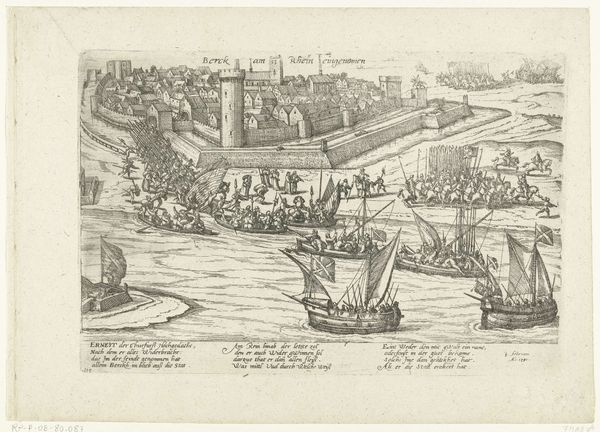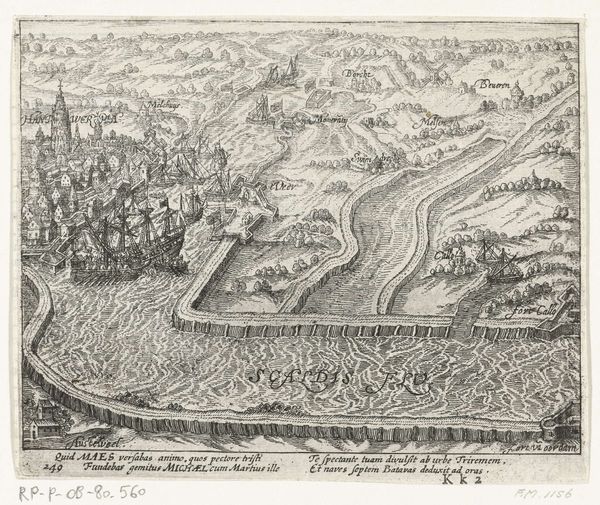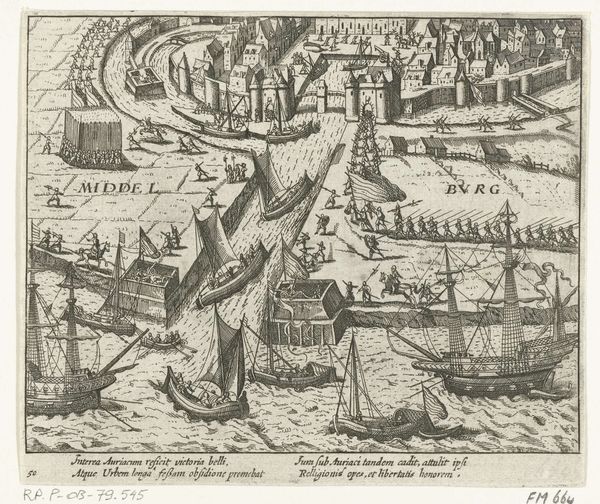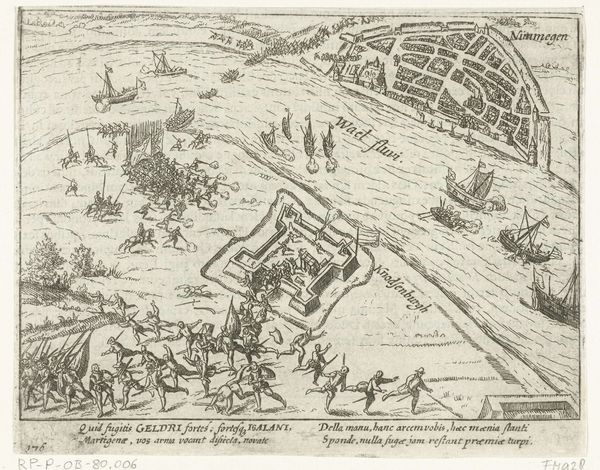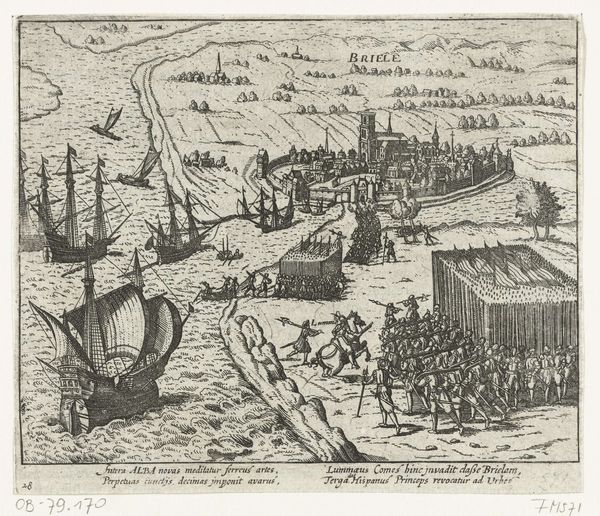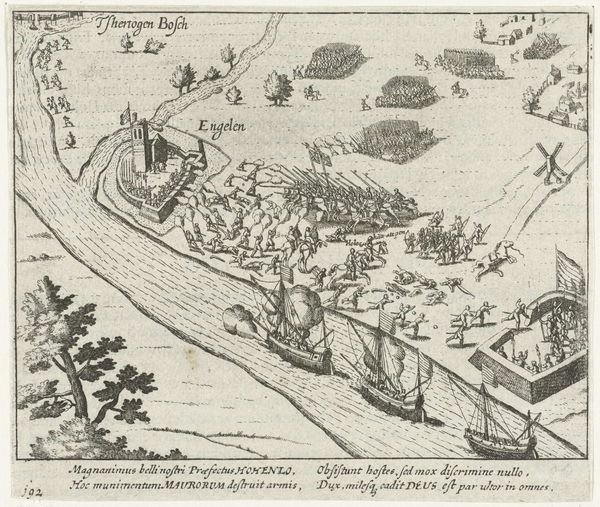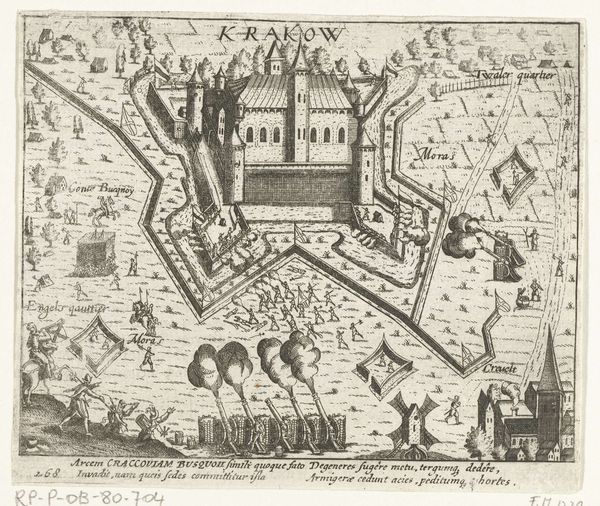
print, engraving
#
narrative-art
#
dutch-golden-age
# print
#
landscape
#
cityscape
#
history-painting
#
engraving
Dimensions: height 133 mm, width 158 mm
Copyright: Rijks Museum: Open Domain
This engraving, made in 1591 by an anonymous artist, depicts Maurits's capture of Delfzijl. This imagery connects to a wider social and cultural context of nation-building and the glorification of military achievements. The image creates meaning through visual codes that represent power and dominance. The artist made this print during the early stages of the Eighty Years’ War, a conflict that determined the future of the Dutch Republic. Specific features of that culture, such as the drive for independence from Spanish rule, significantly influenced the artwork. Such images helped shape a sense of national identity and pride. The print served as a form of propaganda, reinforcing the legitimacy and authority of the Dutch leadership. Understanding this artwork requires historical research into the political and social conditions of the time. By examining the cultural and institutional contexts, we gain deeper insights into the meaning and significance of art as a reflection of its time.
Comments
No comments
Be the first to comment and join the conversation on the ultimate creative platform.

